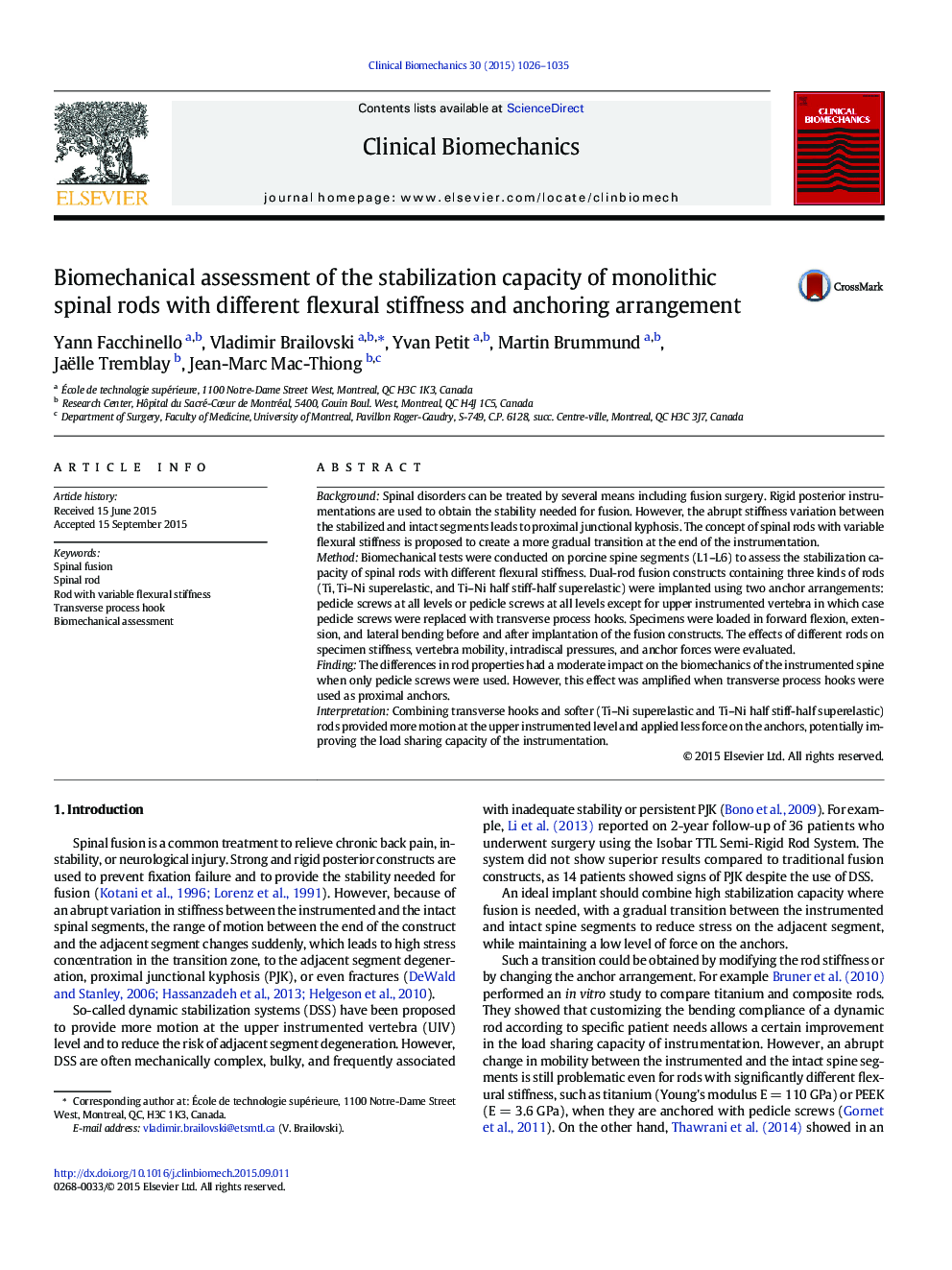| Article ID | Journal | Published Year | Pages | File Type |
|---|---|---|---|---|
| 4050066 | Clinical Biomechanics | 2015 | 10 Pages |
•Rigid instrumentations are used for spinal fusion.•Adjacent segment diseases are frequent complications associated with rigid constructs.•Stabilization capacity of rod with variable stiffness was evaluated in vitro.•Stiffness variation of the rods has a moderate effect when pedicle screws are used.•Transverse hooks at the end of the construct amplify the effect of the rods' stiffness.
BackgroundSpinal disorders can be treated by several means including fusion surgery. Rigid posterior instrumentations are used to obtain the stability needed for fusion. However, the abrupt stiffness variation between the stabilized and intact segments leads to proximal junctional kyphosis. The concept of spinal rods with variable flexural stiffness is proposed to create a more gradual transition at the end of the instrumentation.MethodBiomechanical tests were conducted on porcine spine segments (L1–L6) to assess the stabilization capacity of spinal rods with different flexural stiffness. Dual-rod fusion constructs containing three kinds of rods (Ti, Ti–Ni superelastic, and Ti–Ni half stiff-half superelastic) were implanted using two anchor arrangements: pedicle screws at all levels or pedicle screws at all levels except for upper instrumented vertebra in which case pedicle screws were replaced with transverse process hooks. Specimens were loaded in forward flexion, extension, and lateral bending before and after implantation of the fusion constructs. The effects of different rods on specimen stiffness, vertebra mobility, intradiscal pressures, and anchor forces were evaluated.FindingThe differences in rod properties had a moderate impact on the biomechanics of the instrumented spine when only pedicle screws were used. However, this effect was amplified when transverse process hooks were used as proximal anchors.InterpretationCombining transverse hooks and softer (Ti–Ni superelastic and Ti–Ni half stiff-half superelastic) rods provided more motion at the upper instrumented level and applied less force on the anchors, potentially improving the load sharing capacity of the instrumentation.
